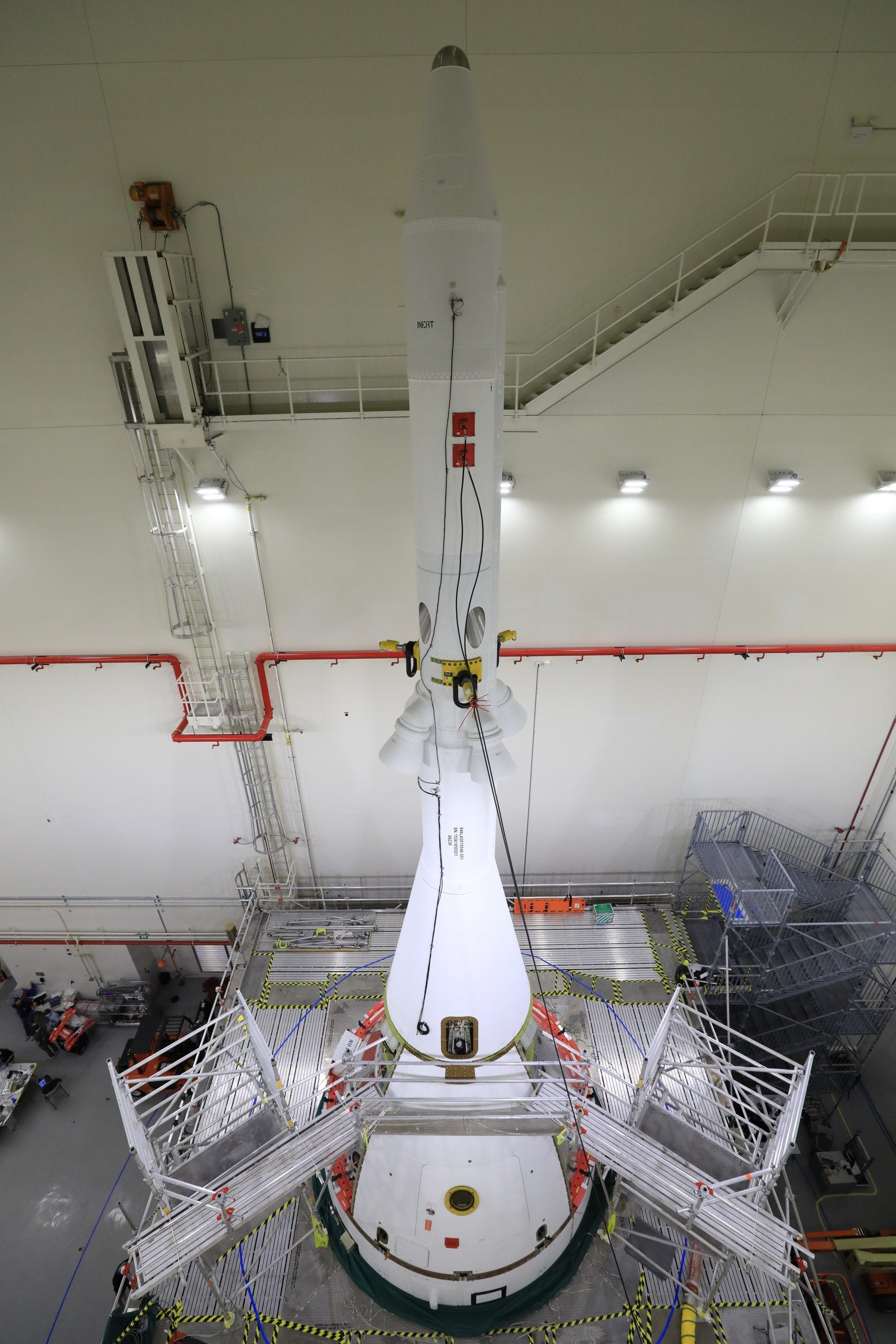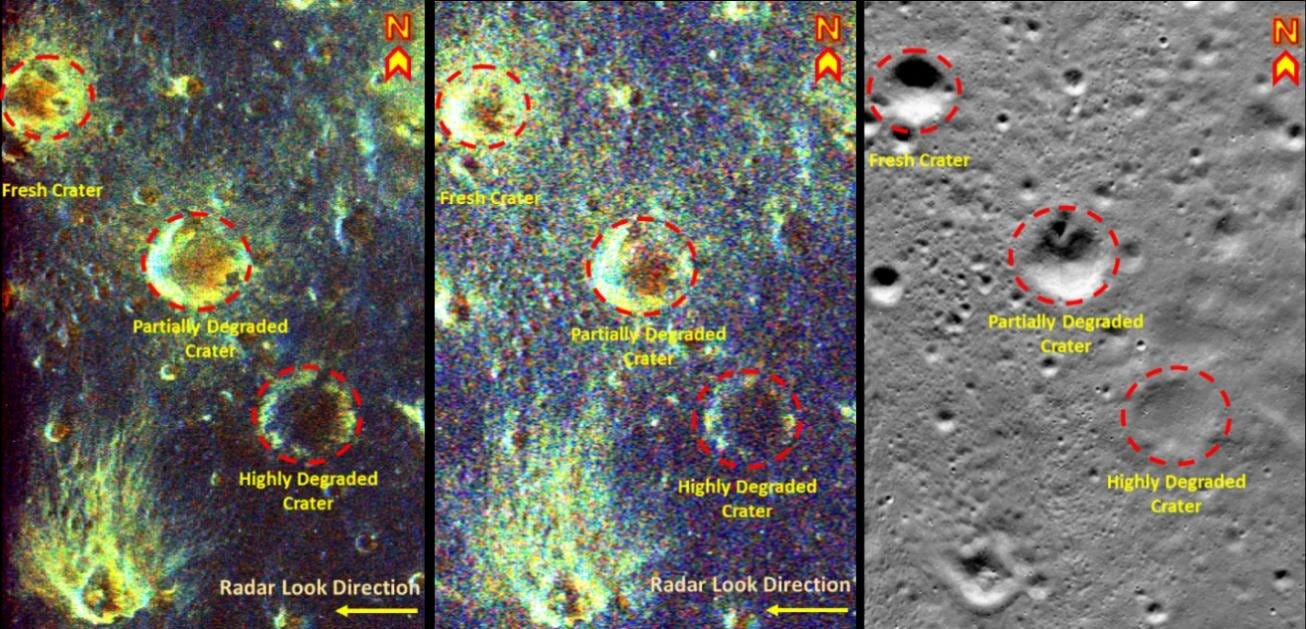Moon Monday Issue #42
ispace Japan unveils next-gen rugged Moon lander, NASA's 1st Artemis Moon mission hardware almost assembled, ISRO Chandrayaan 2 orbiter science workshop, and more lunar developments.
Highlight
Following a $46 million funding round earlier this month, ispace Japan has unveiled its next generation lunar lander Series 2, which will be used for the company’s 3rd Moon landing mission in 2024 and all beyond. ispace will build this large lander in the U.S. via their U.S. office, in partnership with General Atomics and Draper, the latter of whose experience goes back to Apollo missions.

Via Team Draper, ispace will pitch this lander to NASA for delivering their science and technology payloads to the Moon as part of the agency’s CLPS program. To that end, Series 2 is a massive upgrade over the Series 1 lander design to be used in their first two Moon landing missions in 2022 and 2023 respectively, touting several desirable capabilities for sustained lunar exploration in the future:
- As opposed to Series 1’s ability to land 30 kilograms on the Moon’s surface, ispace’s Series 2 lander can deliver up to 500 kilograms. Alternatively, it can deliver up to 2,000 kilograms to lunar orbit.
- The lander and attached payloads can survive the frigid lunar night, key to extending the life of surface missions beyond just 14 Earth days—also something landers currently proposed for NASA’s CLPS program lack.
- Land on either the nearside or farside of the Moon, including polar regions. To date, only China has attempted and successfully landed on the Moon’s farside.
- Less than 100 meters landing accuracy along with automated hazard avoidance, to be provided by Draper, to target desirable areas on the Moon’s poles with precision or access other challenging lunar terrain.
- Engine-out capability, meaning if an engine stops working during the critical descent and landing phase, the spacecraft should still be able to land safely using its other engines.
Related: On August 25, ispace announced their collaboration with Stardust Canada and two Australian organizations to design and build a Moon mining rover. The collaboration will allow ispace to apply for potential contracts for future lunar missions by the Canadian and Australian space agencies respectively.
Exploration
NASA is nearing assembly of its SLS rocket stack to launch on its first mission, Artemis I, later this year to the Moon. After adding the launch abort system to the uncrewed lunar-bound Orion spacecraft on July 23, technicians are now attaching Orion’s fairings. The fairings consist of four protective panels, which will shield the spacecraft and the abort system from the severe vibrations and sounds during the flight. One of the fairing panels has a hatch to access the crew module before launch. Once the fairings are installed, NASA will stack this integrated Orion spacecraft on top of the SLS rocket, and prepare for launch.

Per NASA administrator Bill Nelson, if Artemis I doesn’t launch this year as is the hope, it will launch in January 2022. Related: Out of the 13 small spacecraft Artemis I will deploy on independent science missions to and beyond the Moon, CU-3E and Lunar Flashlight haven’t yet been delivered to NASA, and may not make it in time for launch.
NASA awarded Lunar Outpost, one of the four companies the agency selected last year to collect—not return—lunar material and transfer its ownership to NASA, a check of $0.10 upon successful review of the company’s sample collection and allocation concept. The value of this $1 contract is not in the literal dollar but in terms of setting precedence for legal frameworks to extract and utilize resources on the Moon and in space in the future. As part of this contract, Lunar Outpost will collect lunar soil using its rover, which will be delivered to the Moon by Intuitive Machines’ 2nd mission in December 2022 as part of NASA’s CLPS program.
Related: With growing interest from space nations around the world to acquire lunar resources, and increasingly varied interpretations of what is and isn’t allowed by the 1967 Outer Space Treaty, the Open Lunar Foundation recently announced a lunar resources trust to provide a framework for frictionless management of lunar resources between different stakeholders.
As part of a $10 million NASA Tipping Point award, Masten Space has announced the development of Xogdor rocket, to be used starting 2023 for testing instruments and spacecraft technologies to reduce their risk before sending them to space. Xogdor will greatly expand the testing ability afforded by Masten’s previous vertical takeoff and vertical landing rockets. It can carry at least 200 kilograms of experiments and instruments to space—past the 100 kilometers Kármán line—on suborbital trajectories for reduced gravity testing, and also validate automated navigation and landing technologies for the Moon, Mars, and more during its terrestrial descent and landings. Like other Masten’s rockets, Xogdor can fly multiple times per day.
Previously, Masten’s rockets have tested NASA’s lander vision system which enabled the Perseverance rover’s safe Mars landing, and will also aid in future Moon landings. Another key technology test was last year with a low-cost sampling technology called PlanetVac, now set to go to the Moon in 2023 as well as on Japan’s MMX mission to collect samples from Mars’ moon Phobos in 2024.

Related: Recently, Masten also helped test a prototype laser sensor called Ejecta STORM to detect, quantify, and characterize the high amount of dust ejected by spacecraft when landing on the Moon. Now, to test exactly how spacecraft plumes kick off the Moon’s soil on a larger scale, NASA is preparing to fire large plumes on 120 tons of lunar soil simulant in a vacuum chamber. NASA will also see how well different instruments, such as Ejecta STORM mentioned above, observe the effects of rocket plumes, and then send the best-performing instruments to the Moon in future flights. Understanding the physics of how spacecraft landing and taking off from the Moon’s surface blows dust, and precisely quantifying it, will allow NASA to develop and calibrate predictive software to protect future surface spacecraft, habitats and even low-flying orbiters from hazardous lunar dust from any kind of a surface mission (Hello 👋 Starship).
Science
ISRO is organizing a free, virtual “Lunar Science Workshop” on September 6 and 7 for people interested in using and analyzing data from the Chandrayaan 2 orbiter, which was first released earlier this year on the agency’s Pradan portal. The workshop will include an overview of the capabilities of the orbiter’s instruments (papers on each), science results from them thus far, and lectures on some key aspects of lunar science. Some of the recent discoveries from the Chandrayaan 2 orbiter are:
- Detecting even more water on the sunlit Moon – Paper | Moon Monday coverage
- Detecting Chromium on the Moon – Paper | Moon Monday coverage
- Mapping the structure of a 220 kilometers long wrinkled ridge – Paper | Moon Monday coverage
- Initial results from the radar, the first fully polarimetric synthetic aperture radar sent outside Earth orbit – Paper | Moon Monday coverage

The Soviet Union landed the first remotely-controlled rovers on the Moon, Lunokhod-1 and Lunokhod-2, in the early 1970s. Combined, they drove 52 kilometers across the lunar surface. Data from the missions was only partially published, but now seemingly original data tapes have been found in a private collection, and needs help to be decoded.
More Moon
Dear reader, I’m publishing this one-of-a-kind Moon exploration newsletter for free, with no ads. And it will stay that way. If you like my work, your support will help keep it going.
